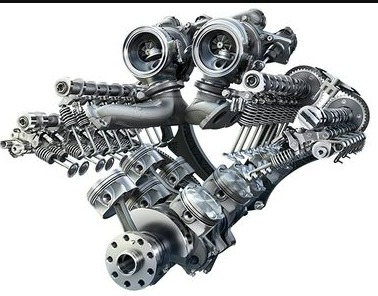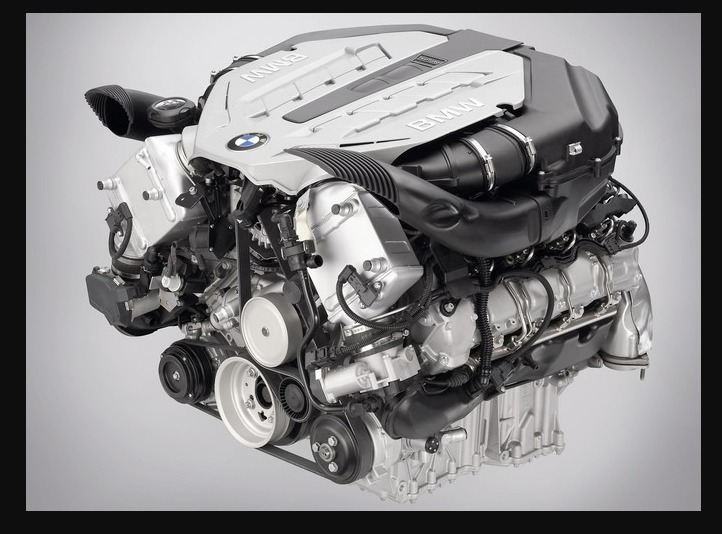The BMW N63 engine is a twin-turbocharged V8 petrol engine. It has been in production since 2008. It is the first turbocharged V8 engine to be built in a “hot vee” layout, where the turbochargers are inside the “V.” The engine is the largest in BMW’s line of cars.
4.4-liter V8
The 4.4-liter V8 N63 engine is a twin-turbocharged petrol engine that has been in production since 2008. The layout of the engine is known as a “hot-vee” and the turbochargers are located inside the “V” portion of the engine. It is BMW’s first turbocharged V8.
Initially, reliability was a concern. However, BMW stepped in to address the issue before it became a major issue. The Customer Care Package included changes to the running system to minimize this issue. The BMW N63 is also equipped with a fuel efficiency system. The system re-charges the battery during coasting.
The N63TU engine was minimally modified to improve its performance. Its new name is a throwback to the days when BMW called minor engine changes “TU,” which stands for Technical Update. Its new name is more palatable than the previous N63B44O1 code.
The N63 engine is composed of aluminum and has 32 valves. It also features direct injection, variable valve timing, and drive-by-wire throttle. It is also equipped with turbochargers cooled by twin air-to-water intercoolers. Another interesting feature of the N63 engine is that it utilizes diverter valves instead of blow-off valves. This is likely for acoustic reasons, as it doesn’t produce a typical turbo whoosh sound.
The N63 engine is not known for its reliability, but BMW has taken steps to solve the problem. Since its launch, the company has issued three updates for the engine. The latest service bulletin was introduced in late 2014.
Direct injection
Direct injection for N63 engines has its own set of problems and quirks. These problems include a high-pressure fuel injector unit that’s prone to failure. While this problem has been corrected under the Customer Care Package, the updated injectors cannot be mixed with the old ones, which can lead to a hydro locking situation and a complete engine failure.
The N63 engine received its third Technical Update in 2018. The N63 was available in two variants, the N63B44M3 and N63B44T3. The N63B44M3 has improved thermal shielding and an improved ignition system. The N63B44T3 also has higher pressure injectors, larger twin scroll turbochargers, and a revised intake manifold. Both of these engines deliver a higher peak torque and higher horsepower than the previous N63.
The new N63 engine also features a fuel efficiency system that will recharge the battery as you coast. This system helps reduce fuel consumption and emissions. During normal driving, it’s recommended to change the oil every 5,000 miles or so. If you drive more than 10,000 miles a year, you’ll need to change the oil every year.
The fuel injectors in the N63 engine are very important to the performance of your car. Faulty fuel injectors can result in rough running and misfires. They deliver fuel pressure at around 200 bar and 2,940 psi, and if the injectors aren’t working properly, your car will experience issues. The faulty injectors can also cause the check engine light to come on.
Twin turbochargers
The BMW N63 will sit above the M3 and be equipped with twin turbochargers. The new model is expected to produce 300kW and 610Nm of torque. The new engine uses a unique concept in the placement of its turbochargers. They are positioned in the ‘V’ of the engine block. This new design allows air to flow in more direct paths to the engine and reduces the overall engine size.

The problem with the BMW N63 engine is that the turbochargers use more energy to cool the engine than the car’s battery can supply. Since the batteries are not able to provide enough power to cool the engine when the car is idle, the car’s cooling system must run. This means that the batteries in the BMW N63 must be recharged regularly in order to support the cooling system.
The BMW N63 engine is a twin turbocharged V8 engine. It has been in production since 2008. It is the first production car engine to feature a “hot vee” layout with the turbochargers positioned inside the “V” of the engine. It replaced the BMW N62 engine and debuted in the 2008 BMW X6 xDrive50i. The N63 engine also has a high-performance version called the S63. Various BMW models also feature Alpina versions of the N63.
In the past few years, BMW has added twin turbochargers to its N63 engine for non-M cars. Other changes have included relocation of the engine’s coolant, improved pistons with additional oil-drain reliefs, and a new half-shell intake system to reduce pressure loss. The N63TU3 produced 456hp.
Long timing chain
The N63 engine is relatively straightforward to service and repair, although there are a lot of pieces and parts to remove. First, you will need to remove the engine compartment to access the engine. Next, you’ll want to take out the timing chain and replace the main crankshaft bearings.
In December of 2014, BMW released a Customer Care Package for the N63 that addressed a number of common issues. This package included parts for the timing chain, fuel injectors, crankcase vent lines, and the low pressure fuel system. However, this package is only for 2009-2014 model year vehicles.
Over time, the timing chains on N63 engines can stretch out and become worn out. This will negatively affect the performance of the engine. Eventually, the chain will bend and result in valve damage. If this happens, it will result in an expensive repair bill. Some early warning signs include a rough idle and check engine light. If you do not address this issue, you risk damaging your engine’s valves and causing it to break down.
Another problem with the BMW N63 engine is that it consumes more oil than the regular N55 series. This can increase your fuel consumption and emissions. BMW tried to remedy the issue by introducing a bigger battery and decreasing the oil service interval to ten thousand miles. As a result, BMW is now including a new battery with each oil service.
Leaky valve stem seals
The AGA N63 Valve Stem Seal Tool Kit allows the mechanic to perform a Valve Stem Seal Repair on the N63 engine without having to dismantle the engine or remove the cylinder heads. This eliminates the risk of a customer returning with cylinder head gasket problems and oil leaks. Not only does this kit allow you to perform a Valve Stem Repair yourself, but it can also be used for your first job.
A leaky valve stem seal is a major cause of white smoke that comes from the exhaust, and it can be fairly inexpensive to replace. While this is a relatively inexpensive part, you should seek assistance from a mechanic if you are not an expert. Although you can replace the valve stem seals yourself, it is not recommended unless you are an experienced mechanic.
The most common cause of a leaky valve stem seal is oil leaks. Oil stop-leak additives can help stop oil leaks and extend the life of valve stem seals. Also, it is recommended that you use high mileage motor oil that contains seal conditioners. This will keep your seals soft and prevent corrosion.
The N63 engine is notoriously oil thirsty. Owners report using up a quart of oil per 600 miles. This problem is a result of the engine’s design, which places the turbos in the valley of the engine. This valley is extremely hot, so it burns through more oil than other parts. The oil can dry out the gaskets, which causes leaks.
